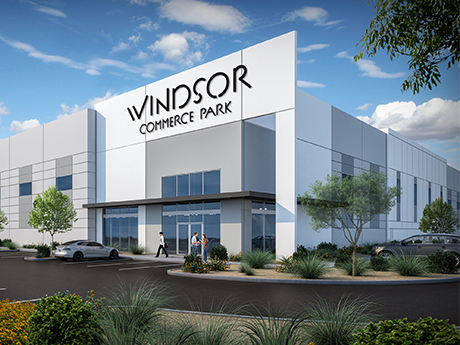— By Jerry Doty, Senior Vice President, Colliers —
Las Vegas was once known only for its flashy casinos and luxurious hotels, but over the past several years, it has become a growing distribution hub for the entire West Coast. Las Vegas is situated at the intersection of several major highways, making it an ideal location for businesses that need to move goods quickly and efficiently.
The city’s proximity to the ports of Los Angeles and Long Beach also make it a gateway for goods entering and leaving the United States. Our industrial market has had an epic rise in recent years, and up until the recent economic shake-up with rising interest rates and uncertainty in the capital markets, there was no end in sight. We continue to ask ourselves if 2023 will be the year things finally slow down or, even worse, take a step back.
First, the good news. One of the most striking statistics about the Las Vegas industrial market is the extremely low vacancy rate. Despite delivering about 8.5 million square feet over the previous five quarters, we still sit at a near record-low overall vacancy of 1.5 percent for the first quarter of 2023. Even more remarkable is the vacancy rate for warehouse distribution properties, which started the year at 0.9 percent.
Tenant demand also remains strong with 90 percent of the nearly 2 million square feet delivered in first-quarter 2023 pre-leased and 40 percent of the entire under-construction pipeline already spoken for. However, we have started to see total transaction volume decrease slightly year over year. It seems tenants are taking more time with their decision processes or putting off their requirements until they are forced to react. While clients still need warehouse space, their internal processes have slowed, making companies more deliberate with their decisions. That said, we don’t expect any issues leasing the current pipeline of projects under construction.
Beyond the next eight months is where the picture is not so clear. Several planned projects set to deliver in 2024 have been delayed or put on pause for the unforeseeable future. This was either due to a reluctance from the developer or, more commonly, to the tightening of the banking system on construction loans. What kind of market will we have if tenant demand stays elevated, we have low single-digit vacancy and minimal new product being delivered? Our job over the next several quarters will be to try and determine how much of the entire 35-million-plus-square-foot pipeline will actually be delivered.
The Las Vegas industrial investment market was stagnant in the second half of 2022, save for a few trades driven by 1031 exchange buyers. Investors have been sitting on the sidelines for several months, and we expected 2023 to start similarly. However, several new investment opportunities went out to the market at the beginning of the year and garnered significant interest. Several deals are expected to close over the coming weeks, setting the new benchmark for cap rates…at least for now.
If the Las Vegas industrial market had not successfully diversified and expanded to become a key regional distribution hub over the past five years, we might be telling a different story on where things were heading. However, as we sit here today, the outlook for Las Vegas, while a bit clouded, is still very positive.


